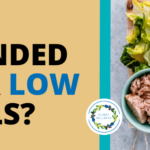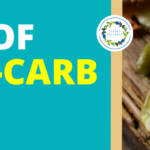Can you eat fruits with Diabetes?
Living with diabetes often means hearing that fruit contains too much sugar to be eaten. But what’s important to know is that fruit is healthy and safe for those with diabetes. The fibre, vitamins, minerals and antioxidants found in fruit help keep your diet balanced and healthy.
Let’s look at it step by step.
Watch and learn from our insightful video, “Should Diabetics Eat Fruit?“
Why Fruit Matters
Fruit is good for your general health and especially beneficial for people with diabetes.
- Because fibre delays how sugar moves through the body, it helps keep blood sugar steady.
- Vitamins and minerals help your body stay healthy, as potassium does for your blood pressure and vitamin C boosts your immunity.
- Fruits that contain antioxidants, including berries and grapes, limit inflammation and could improve your body’s response to insulin.
- Because they are low in calories and full of healthy nutrients and water, fruits can be useful for managing your weight.
Based on advice from the American Diabetes Association, (ADA) people living with diabetes should include fruits in their diets.
How Fruit Affects Blood Sugar
Blood sugar levels are not always affected the same by different types of fruit. Here’s what you should know about three popular options:
- Whole apple
-
-
- Rich in fibre
- Gradually increases your blood sugar levels
-
- Apple juice
-
-
- No fibre
- Causes blood sugar levels to go up fast
-
- Apple-flavoured candy
-
- No fibre
- Can lead to a sudden increase in blood sugar
In short, eating whole fruit is best because fibre helps control how fast sugar is absorbed.
How Much Fruit Is “Okay”?
The ADA recommends having 2–3 servings of fruit each day and this translates to 1 to 1½ cups, depending on your carb intake.
Nearly 15 grams of carbohydrates are found in a standard serving of fruit like the following:
- A small whole piece of fruit like an apple, orange or peach
- One half of a large banana or mango
- 1 cup of berries or cubed melon
- 2 tablespoons of dried fruit such as raisins or cranberries
You should follow your meal plan and note how your body responds to these changes.
Choosing Smart Fruits
Best everyday fruits (lower glycemic impact):
- Fruits that are fresh, frozen or simply canned, without added sugar
- Blueberries, strawberries and raspberries
- Eating apples and pears, especially with their skin on
- Oranges, grapefruit, peaches, plums and kiwis
Fruits to enjoy in smaller portions:
- Some examples of tropical fruits are pineapple, mango and ripe bananas
- Among the dried fruits are raisins, apricots and cranberries
- It’s fine to drink 100% fruit juice, but keep your servings small (around ½ cup)
Look for fruits in cans that have been packed with water or fruit juice instead of syrup
Tips for Enjoying Fruit with Diabetes
Use these helpful tips to eat more fruit each day:
- Try eating your fruit with foods that have protein or healthy fats
Possible combinations include apple and cheese, berries with Greek yoghurt and banana along with sunflower seed butter.
- Spread your fruit intake throughout the day
to prevent too much glucose from rising in your blood at the same time.
- Don’t throw away the peel
of your fruits like apples and pears because they help you get more fibre and nutrients.
- Select fresh whole fruits instead of simply drinking fruit juice
in order to get fibre and prevent spikes in blood sugar levels.
- Test your response
Check your blood sugar 1–2 hours after you eat any new fruits.
Sample One-Day Fruit Plan
Try including fruit in your meals and snacks this way (≈45g carbs from fruit):
Breakfast:
Add 1 cup of blueberries to oatmeal to make it healthier. These foods together help keep blood sugar steady.
Lunch:
A sandwich with apples, turkey and avocado. The reason it works: fibre in the apple, protein in the turkey and fat from avocados provide a balanced meal.
Snack:
Add 2 tablespoons of raisins to a small handful of almonds (or pumpkin seeds if you have a nut allergy). The reason it works: Fat and protein in the meal prevent sugar from being absorbed too quickly.
Dinner:
Grilled pineapple as dessert after eating salmon and quinoa. It works because fruit eaten after a high-protein meal helps reduce the speed at which glucose enters the bloodstream.
Busting the “Fruit Equals Sugar” Myth
Let’s talk about a misunderstanding that comes up all the time:
- The natural sugar found in fruit is not the same as the sugar added to sweet foods and fizzy drinks.
- The vitamins, fibre and water in fruit help your body break down sugar slowly.
- Chewing whole fruit helps digestion go slower, unlike juice or sweets which can raise your blood sugar fast.
- Including whole fruits in your diet nourishes you, but the sugar from cakes and/or fizzy drinks adds nothing healthy to your meal.
Research has found that regular fruit consumption by people with diabetes can result in better health than those who do not eat fruit daily.
Frequently Asked Questions
Q: Should I stay away from bananas?
A: No! 3/4 of a banana makes up one serving of fruit. If you eat it with protein or fat, your blood sugar will remain balanced (like with sunflower seed butter or yoghurt).
Q: Can you drink fruit juice when trying to lose weight?
You can still drink it, but it’s better to drink less of it. Try not to drink more than ½ cup and always enjoy your juice with a meal for a milder rise in blood sugar.
Q: Are there issues with low-carb diets that don’t include fruit?
Some prefer diets with few carbs, but the ADA recommends flexible ways to eat. It’s usually fine for people to eat moderate amounts of carbs, for example some fruit and still keep their blood sugar normal.
Watch and learn which fruits you can eat to control Diabetes.
Conclusion
- You can still enjoy eating fruit even if you have diabetes.
- Enjoy 2–3 servings daily of either whole or unsweetened fruit.
- Eat more berries, apples and citrus since they are lower on the glycemic index.
- Eat some fruit together with protein or healthy fat and split your portions into smaller meals throughout the day.
- Whole fruit helps you stay healthy, tastes good and is diabetes-friendly.
So don’t worry about a thing and take a bite out of that juicy peach or crisp apple. Your body will be thankful that you chose healthy foods.
Make fruit your partner in enjoying life with diabetes!
This article is for educational purposes only and not a substitute for professional and personalized medical advice. Always seek diagnosis and treatment from a qualified healthcare provider, which is specific to your own case.
We offer both a Beginner’s Diabetes Introductory Course and an Advanced Course, These courses provide detailed explanations on managing or preventing Diabetes effectively. Investing in yourself and your body is crucial, as ultimately, everything else is materialistic. Feel free to explore our courses!
Discover the holistic approach to managing Diabetes in our FREE booklet ‘Best Ways To Treat Diabetes’. From this guide, you will learn the various treatments that can be done at home, foods to avoid and those you need to include in your diet, among other essential information. Download your FREE copy today and start the journey to take control of your life and prevent Diabetes.
Embark on a transformative journey towards better health when you purchase our book, “THE DIABETES SOLUTION: A 28 DAY ACTION PLAN FOR LOWERING BLOOD SUGAR NATURALLY”. A wealth of information derived from years of experience in helping people with Diabetes and other health issues can be found in our #1 bestselling book on Amazon. Drawing from a diverse clientele spanning continents and cultures, we have curated a comprehensive action plan rooted in natural remedies and time-tested practices. This book is an indispensable companion, whether you are Diabetic, Prediabetic or looking for preventive action. Give yourself the power to take control of your health and see remarkable results, from nutritious recipes to invaluable advice on living a healthy life. You will be guided by the “THE DIABETES SOLUTION” to a healthier and happier future!
To learn more about Diabetes, check out our other related blogs:
Health Benefits of Fruit and Vegetable Juice
What should Diabetics eat first thing in the morning?
Food Tips For People With Diabetes




